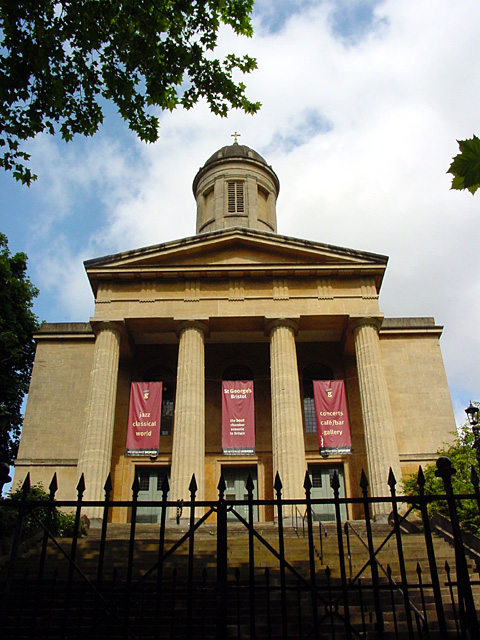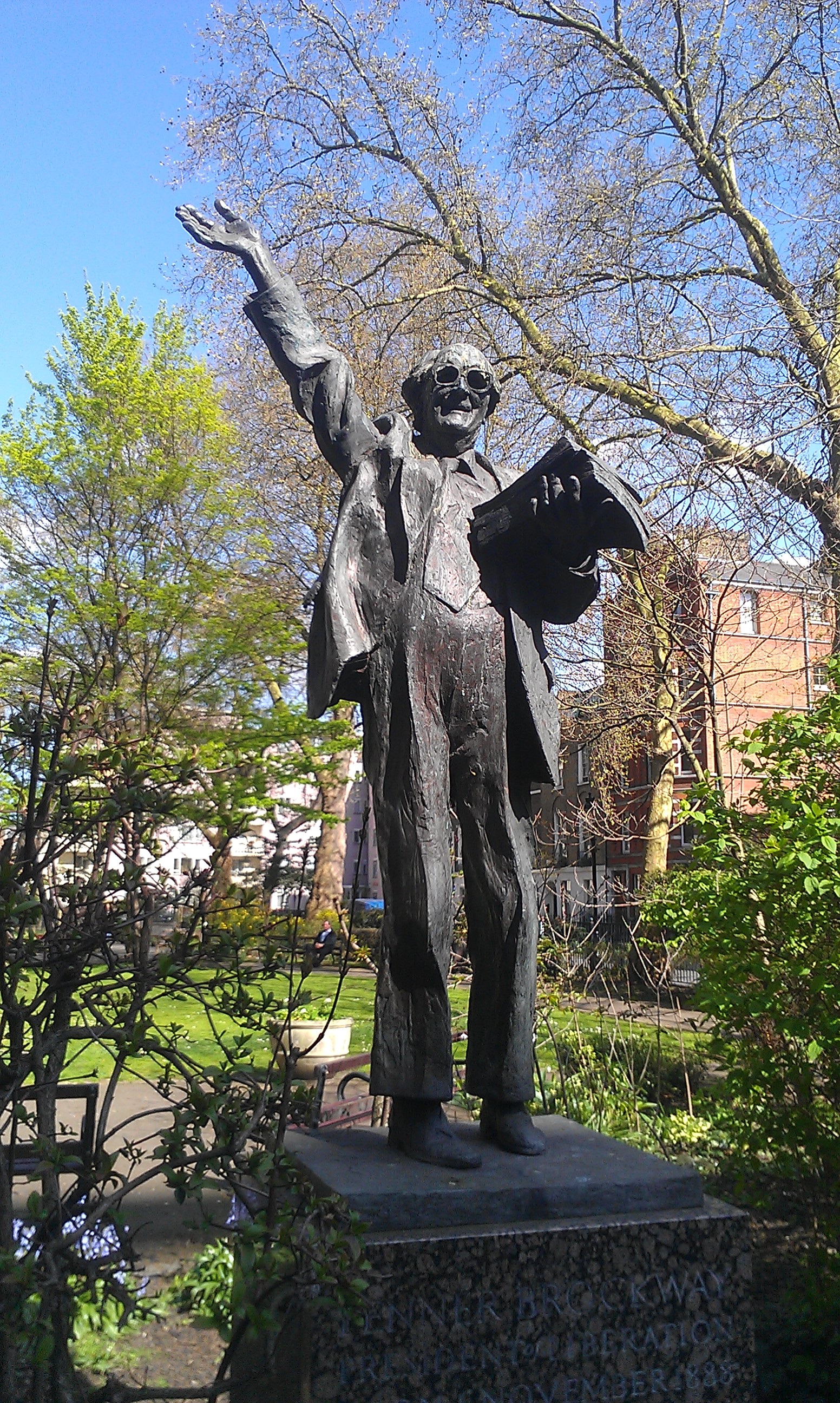|
Metropolitan Public Gardens Association
The Metropolitan Public Gardens Association (also known as the MPGA) is a charity in London for the purposes of the preservation of public parks and gardens, established in 1882. It facilitated the creation of new public open spaces, including from philanthropic landowners within its membership. The MPGA was involved in the formation and development of other amenity organisations. The charity still exists; in recent decades its emphasis has changed to smaller parcels of land and smaller projects within larger spaces, as well as to themed projects. The MPGA was the starting point for the careers of the ground-breaking female landscape gardeners Fanny Wilkinson and Madeline Agar. History The Irish philanthropist Lord Brabazon (who, from 1887, was the 12th Earl of Meath) wanted to make more effort than the Kyrle Society (of which he was a member) was able to do to capitalise on the Metropolitan Open Spaces Act 1881. The Kyrle Society had been formed in 1876. The 1881 Act, which h ... [...More Info...] [...Related Items...] OR: [Wikipedia] [Google] [Baidu] |
London
London is the capital and largest city of England and the United Kingdom, with a population of just under 9 million. It stands on the River Thames in south-east England at the head of a estuary down to the North Sea, and has been a major settlement for two millennia. The City of London, its ancient core and financial centre, was founded by the Romans as '' Londinium'' and retains its medieval boundaries.See also: Independent city § National capitals The City of Westminster, to the west of the City of London, has for centuries hosted the national government and parliament. Since the 19th century, the name "London" has also referred to the metropolis around this core, historically split between the counties of Middlesex, Essex, Surrey, Kent, and Hertfordshire, which largely comprises Greater London, governed by the Greater London Authority.The Greater London Authority consists of the Mayor of London and the London Assembly. The London Mayor is distinguished fr ... [...More Info...] [...Related Items...] OR: [Wikipedia] [Google] [Baidu] |
Commissioners' Church
A Commissioners' church, also known as a Waterloo church and Million Act church, is an Anglican church in the United Kingdom built with money voted by Parliament as a result of the Church Building Acts of 1818 and 1824. The 1818 Act supplied a grant of money and established the Church Building Commission to direct its use, and in 1824 made a further grant of money. In addition to paying for the building of churches, the Commission had powers to divide and subdivide parishes, and to provide endowments. The Commission continued to function as a separate body until the end of 1856, when it was absorbed into the Ecclesiastical Commission. In some cases the Commissioners provided the full cost of the new church; in other cases they provided a partial grant and the balance was raised locally. In total 612 new churches were provided, mainly in expanding industrial towns and cities. Title The First Parliamentary Grant for churches amounted to £1 million (equivalent to £ in ), ... [...More Info...] [...Related Items...] OR: [Wikipedia] [Google] [Baidu] |
London Borough Of Camden
The London Borough of Camden () is a London borough in Inner London. Camden Town Hall, on Euston Road, lies north of Charing Cross. The borough was established on 1 April 1965 from the area of the former boroughs of Hampstead, Holborn, and St Pancras—which together, prior to that date, had comprised part of the historic County of London. The cultural and commercial land uses in the south contrast with the bustling mixed-use districts such as Camden Town and Kentish Town in the centre and leafy residential areas around Hampstead Heath in the north. Well known attractions include The British Museum, The British Library, the famous views from Parliament Hill, the London Zoo, the BT Tower, The Roundhouse and Camden Market. In 2019 it was estimated to have a population of 270,000. The local authority is Camden London Borough Council. History The borough was created in 1965 from the areas of the former Metropolitan boroughs of the County of London, metropolitan boroughs of H ... [...More Info...] [...Related Items...] OR: [Wikipedia] [Google] [Baidu] |
Red Lion Square
Red Lion Square is a small square in Holborn, London. The square was laid out in 1684 by Nicholas Barbon, taking its name from the Red Lion Inn. According to some sources, the bodies of three regicides—Oliver Cromwell, John Bradshaw and Henry Ireton—were placed in a pit on the site of the square. By 1720, it was a fashionable part of London: the eminent judge Sir Bernard Hale was a resident of Red Lion Square. The square was "beautified" pursuant to a 1737 Act of Parliament. In the 1860s, on the other hand, it had clearly become decidedly unfashionable: the writer Anthony Trollope in his novel '' Orley Farm'' (1862) humorously reassures his readers that one of his characters is perfectly respectable, despite living in Red Lion Square. The Metropolitan Public Gardens Association's landscape gardener Fanny Wilkinson laid it out as a public garden in 1885, and, in 1894, the trustees of the square passed the freehold to the MPGA, which, in turn, passed it to the London County ... [...More Info...] [...Related Items...] OR: [Wikipedia] [Google] [Baidu] |
London Plane Tree
London is the capital and largest city of England and the United Kingdom, with a population of just under 9 million. It stands on the River Thames in south-east England at the head of a estuary down to the North Sea, and has been a major settlement for two millennia. The City of London, its ancient core and financial centre, was founded by the Romans as ''Londinium'' and retains its medieval boundaries.See also: Independent city § National capitals The City of Westminster, to the west of the City of London, has for centuries hosted the national government and parliament. Since the 19th century, the name "London" has also referred to the metropolis around this core, historically split between the counties of Middlesex, Essex, Surrey, Kent, and Hertfordshire, which largely comprises Greater London, governed by the Greater London Authority.The Greater London Authority consists of the Mayor of London and the London Assembly. The London Mayor is distinguished from the Lord Mayo ... [...More Info...] [...Related Items...] OR: [Wikipedia] [Google] [Baidu] |
London Borough Of Islington
The London Borough of Islington ( ) is a London borough in Inner London. Whilst the majority of the district is located in north London, the borough also includes a significant area to the south which forms part of central London. Islington has an estimated population of 215,667. It was formed in 1965 under the London Government Act 1963, which simultaneously abolished the metropolitan boroughs of Islington and Finsbury. The new entity remains the second smallest borough in London and the third-smallest district in England. The borough contains two Westminster parliamentary constituencies, both formerly represented by Labour Members of Parliament: Jeremy Corbyn, the party's leader from 2015 to 2020, represents Islington North and currently sits as an independent after the whip was withdrawn from him in October 2020, and Emily Thornberry represents Islington South & Finsbury. The local authority is Islington Council. The borough is home to football club Arsenal, one of the ... [...More Info...] [...Related Items...] OR: [Wikipedia] [Google] [Baidu] |
Northampton Square
Northampton Square, a green town square, is in a corner of Clerkenwell projecting into Finsbury, in Central London. It is between Goswell Road and St John Street (and Spencer and Percival Streets), has a very broad pedestrian walkway on the north-west side between university buildings and is fronted chiefly by main buildings of City, University of London. History The area began to be developed in the industrial revolution. The land was laid out for housing, as a residential square, in 1832, taking its name from the local landowner, the Marquess of Northampton. The gardens were opened to the public in 1885, with funding from the Metropolitan Public Gardens Association. The Association's landscape gardener Fanny Wilkinson designed the gardens, and included a drinking fountain and bandstand, both of which remain, as does a circle of London plane trees. The fountain in the square commemorates the 1885 restoration of the gardens by Shropshire magistrate Charles Walker, who had been b ... [...More Info...] [...Related Items...] OR: [Wikipedia] [Google] [Baidu] |
Surrey Commercial Docks
The Surrey Commercial Docks were a large group of docks in Rotherhithe, South East London, located on the south bank (the Surrey side) of the River Thames. The docks operated in one form or another from 1696 to 1969. Most were subsequently filled in and redeveloped for residential housing, and the area is now known as Surrey Quays, although the name Surrey Docks is retained for the electoral ward. History The sparsely populated Rotherhithe peninsula was originally wet marshland alongside the river. It was unsuitable for farming, but its riverside location just downstream from the City of London made it an ideal site for docks. The area had long been associated with maritime activities: in July 1620 the Pilgrim Fathers' ship the Mayflower sailed from Rotherhithe for Southampton, to begin loading food and supplies for the voyage to New England, and a major Royal Navy dockyard was located just down the river at Deptford. In 1696, Howland Great Wet Dock (named after the family who ... [...More Info...] [...Related Items...] OR: [Wikipedia] [Google] [Baidu] |
Holy Trinity Church, Rotherhithe
Holy Trinity Church is a Church of England parish church in Rotherhithe, south east London, within the diocese of Southwark The Diocese of Southwark is one of the 42 dioceses of the Church of England, part of the worldwide Anglican Communion. The diocese forms part of the Province of Canterbury in England. It was created on 1 May 1905 from part of the ancient Dio .... History The original church on the site was built between 1837 and 1838, as the expansion of the Surrey Commercial Docks drove a growth of population that exhausted the capacity of the original parish of St Mary's Church, Rotherhithe. The building was designed in a Gothic Revival architecture, neo-Gothic style by Sampson Kempthorne, better known as a designer of workhouses: The churchyard was closed to burials in 1858, and was converted by the Metropolitan Public Gardens Association into a small public garden in 1885. The original church building was destroyed by incendiary bombs during an The Blitz, air ... [...More Info...] [...Related Items...] OR: [Wikipedia] [Google] [Baidu] |




.jpg)

.jpg)